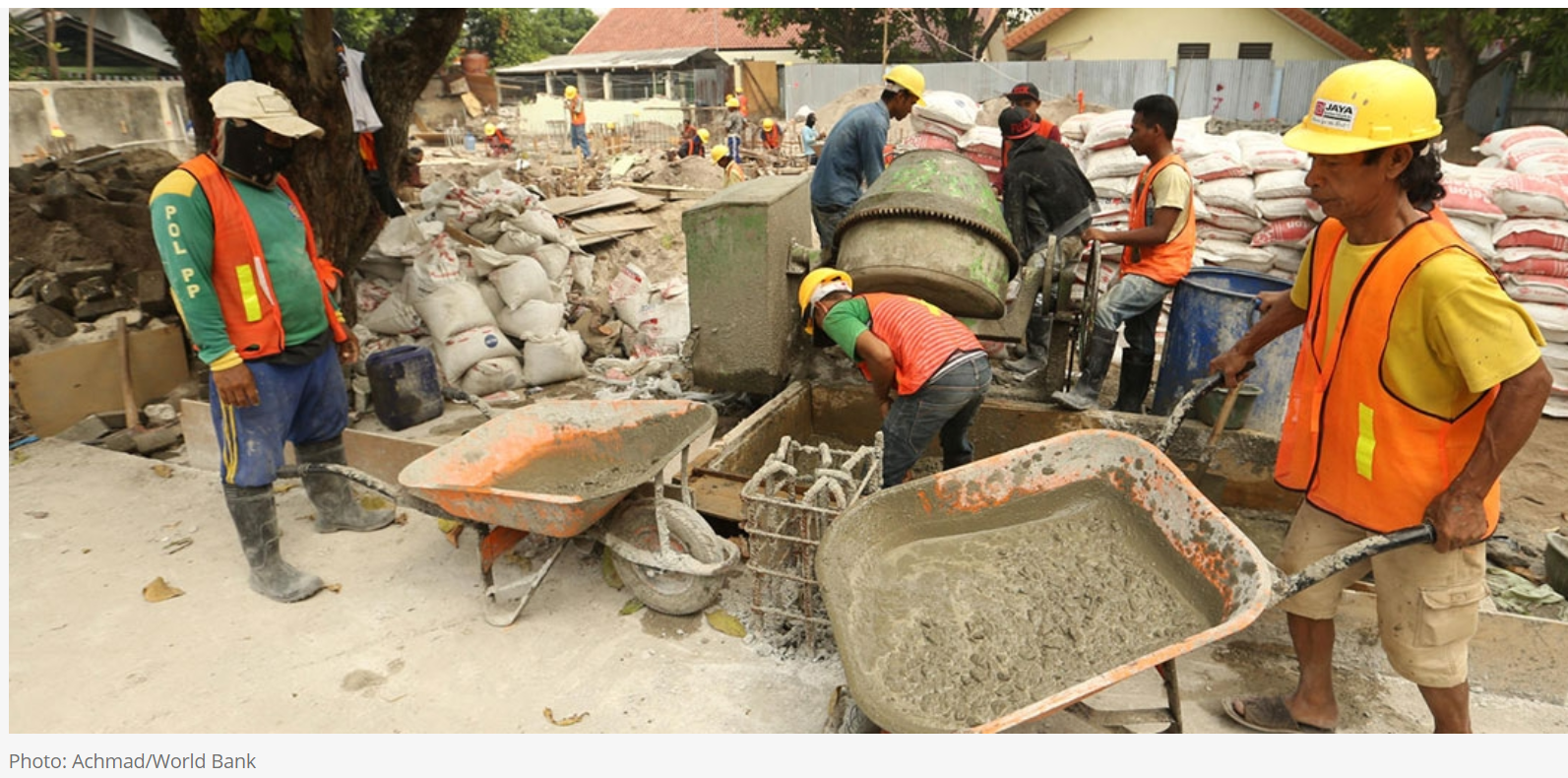More productive jobs to embrace a more prosperous Indonesia
Indonesia has made great strides in becoming a middle-class country and is working to become a thriving high-income country by 2045. Recognizing the importance of job creation throughout this journey, the country has remained committed to creating conditions for robust job creation. Even as progress globally has been derailed by the COVID-19 pandemic, Indonesia has kept its focus on human capital development and economic transformation – two areas fundamental for job creation.
Going forward, how can Indonesia turn the COVID-19 crisis into an opportunity to build forward better and create not just any jobs but “middle-class jobs”, defined as jobs that will allow an average Indonesian household to afford a middle-class way of life? Building on the ongoing comprehensive policy interventions to close infrastructure, human capital, and financial service gaps, our report, Pathways to Middle-Class Jobs in Indonesia, offers a three-pronged strategy focusing on promoting across-the-board productivity growth, shifting economic activity and workers to more productive and higher-paying sectors, firms, and jobs, and building a workforce that has the necessary skills – including cognitive, interpersonal, and digital skills – to take on middle-class jobs.
This three-pronged approach addresses both the demand-side and supply-side constraints to middle-class job creation. Specifically, on the demand side, middle-class job creation is constrained by weak labor productivity growth and lack of firm dynamism and expansion. Indonesia’s structural transformation has not brought enough gains to labor productivity – defined as real value added per worker – and nearly half of all jobs (45.8 percent) created between 2008 and 2018 were in low-productivity, low-wage services. Barriers to competition, regulatory uncertainties, and limited trade and investment are muting dynamism and growth of firms. Further, entrepreneurial policies framed with a welfare approach alone, for example by giving only cash assistance, have had limited success in helping increase productivity in household enterprises – where two thirds of jobs are located – and in Small and Medium Enterprises (SMEs). On the supply side, most of today’s workforce is not equipped to hold a middle-class job due to their low skills and an insufficient workforce development system.
The first prong is the promotion of productivity growth across the board, not least in sectors with low value added. To increase productivity across the board, the policy makers could enact competition- and competitiveness-enhancing policies that will help firms enter the marketplace and grow, and spur innovation. These policies would focus on lowering the high cost of trade, increasing access to highly skilled international talents that are currently in need in Indonesia, and attracting export-oriented, efficiency-seeking foreign direct investment with links to global value chains. SME policies and tailored support for household enterprises could focus on productivity and efficiency, instead of only welfare.
Second, a more decisive shift of economic activity and workers toward more productive and higher-paying sectors, firms, and jobs can advance the middle-class job creation agenda. Even if reforms to increase productivity across the board are sector-blind, Indonesia could prioritize certain policy reforms in sectors that create middle-class jobs. For example, it could target investment promotion strategies in sectors and projects, including infrastructure projects, that are more likely to be a source of middle-class jobs. Robust labor market information systems, a strong job-matching mechanism, legislation that does not disincentivize job changes, and support for job movements—including through unemployment insurance—can also help workers prepare for, and advance to, better jobs.
Finally, This will require changes to the education system to better prepare today’s youth for modern jobs. It will also require innovations to upskill the current adult labor force. Additional support to attract women and youth into the workforce and help them succeed in the labor market would also be increasingly necessary as Indonesia’s demographic dividend will peak as early as 2025-2030.
Indonesia has shown that it can take on the challenges of implementing a multifaceted reform agenda for jobs. It is one of a few countries that has applied a holistic approach to jobs issues, engaged stakeholders across the spectrum, and placed job creation at the center of its legislative agenda. Jobs are not the only outcome of the country’s development, but jobs have driven Indonesia’s rapid economic growth, poverty reduction, and the emergence of a vibrant and growing middle class.
While recent economic disruption caused by the COVID-19 crisis threatens Indonesia’s progress toward more productive jobs, the proposed three-pronged strategy supports Indonesia’s efforts to use the crisis as an opportunity for more high-quality, productive, and competitive jobs. That in turn would open the possibilities for more Indonesian households to join the middle class and support the country’s aspiration to become a high-income country by 2045.
This article was published in bisnis.com


 English
English




